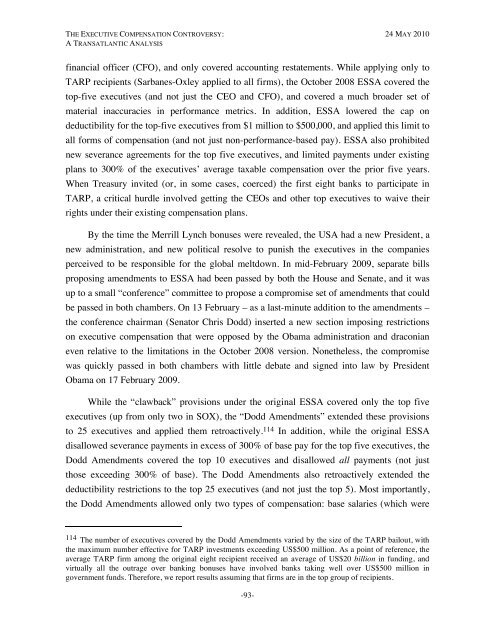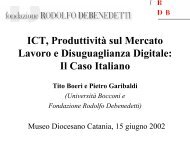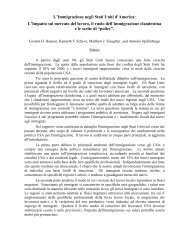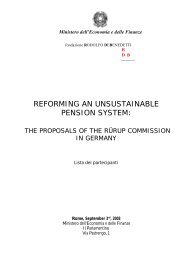The Executive Compensation Controversy - Fondazione Rodolfo ...
The Executive Compensation Controversy - Fondazione Rodolfo ...
The Executive Compensation Controversy - Fondazione Rodolfo ...
Create successful ePaper yourself
Turn your PDF publications into a flip-book with our unique Google optimized e-Paper software.
THE EXECUTIVE COMPENSATION CONTROVERSY: 24 MAY 2010A TRANSATLANTIC ANALYSISfinancial officer (CFO), and only covered accounting restatements. While applying only toTARP recipients (Sarbanes-Oxley applied to all firms), the October 2008 ESSA covered thetop-five executives (and not just the CEO and CFO), and covered a much broader set ofmaterial inaccuracies in performance metrics. In addition, ESSA lowered the cap ondeductibility for the top-five executives from $1 million to $500,000, and applied this limit toall forms of compensation (and not just non-performance-based pay). ESSA also prohibitednew severance agreements for the top five executives, and limited payments under existingplans to 300% of the executives’ average taxable compensation over the prior five years.When Treasury invited (or, in some cases, coerced) the first eight banks to participate inTARP, a critical hurdle involved getting the CEOs and other top executives to waive theirrights under their existing compensation plans.By the time the Merrill Lynch bonuses were revealed, the USA had a new President, anew administration, and new political resolve to punish the executives in the companiesperceived to be responsible for the global meltdown. In mid-February 2009, separate billsproposing amendments to ESSA had been passed by both the House and Senate, and it wasup to a small “conference” committee to propose a compromise set of amendments that couldbe passed in both chambers. On 13 February – as a last-minute addition to the amendments –the conference chairman (Senator Chris Dodd) inserted a new section imposing restrictionson executive compensation that were opposed by the Obama administration and draconianeven relative to the limitations in the October 2008 version. Nonetheless, the compromisewas quickly passed in both chambers with little debate and signed into law by PresidentObama on 17 February 2009.While the “clawback” provisions under the original ESSA covered only the top fiveexecutives (up from only two in SOX), the “Dodd Amendments” extended these provisionsto 25 executives and applied them retroactively. 114 In addition, while the original ESSAdisallowed severance payments in excess of 300% of base pay for the top five executives, theDodd Amendments covered the top 10 executives and disallowed all payments (not justthose exceeding 300% of base). <strong>The</strong> Dodd Amendments also retroactively extended thedeductibility restrictions to the top 25 executives (and not just the top 5). Most importantly,the Dodd Amendments allowed only two types of compensation: base salaries (which were114 <strong>The</strong> number of executives covered by the Dodd Amendments varied by the size of the TARP bailout, withthe maximum number effective for TARP investments exceeding US$500 million. As a point of reference, theaverage TARP firm among the original eight recipient received an average of US$20 billion in funding, andvirtually all the outrage over banking bonuses have involved banks taking well over US$500 million ingovernment funds. <strong>The</strong>refore, we report results assuming that firms are in the top group of recipients.-93-









